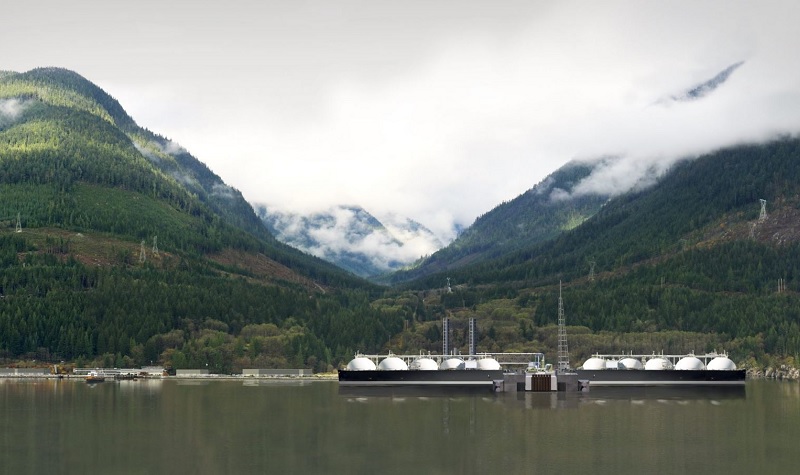Natural gas, supercooled during the liquefaction process to become LNG, is transported by sea via carrier, warmed up (regasified) and delivered via pipeline to consumers.
Why the time is right for North American LNG
‘Our carbon emission reduction programs position us as the green transporter of choice’
Amid the surging global demand for energy, liquefied natural gas (LNG) has emerged as perhaps the most compelling solution to the dual challenge of energy security and net-zero imperatives.
LNG already leads the way in global gas trade, accounting for much of the growth in demand between 2021 and 2025, according to the International Energy Agency’s Gas Market Report for Q3 of 2022. By 2025, demand for LNG is expected to increase by close to 20% from 2021 levels.
This surge in demand is happening within the context of natural gas shortages in Europe and a widespread transition to low- or zero-carbon economies. And yet recently, Germany, Italy, Austria and the Netherlands returned to coal-fired power generation as a temporary means to conserve natural gas.
“The U.S. Energy Information Administration’s International Energy Outlook forecasts a 50% increase in global energy demand by 2050, and to meet this demand we’ll need a diverse mix of energy sources,” notes Brian Johnson, Vice President, Canadian Gas Transmission and Midstream at Enbridge Inc., a North American energy delivery company. “Natural gas and LNG will be incredibly important to ensure energy security and advance the transition to a lower-carbon future by supporting renewables, which are intermittent and need to be backed by constant, reliable sources. In fact, natural gas is the single biggest factor in reducing emissions in the U.S. by 20% since 2005.”
Right place, right time on the U.S. Gulf Coast
Enbridge’s natural gas system runs along the U.S. Gulf Coast making it an ideal conduit to support growing LNG exports in the area. The company, which transports 20% of natural gas consumed in the U.S., supplies natural gas to four operating LNG facilities in the Gulf Coast and is poised to serve at least three more based on executed Precedent Agreements.
“We’re seeing international buyers signing long-term agreements with facilities along the Gulf Coast, and more projects are reaching or nearing final investment decisions,” says Cynthia Hansen, Executive Vice President and President, Gas Transmission and Midstream, at Enbridge. “And with the trend towards differentiated LNG, our carbon emission reduction programs position us as the ‘green transporter’ of choice.”
To advance its targets of net zero by 2050 and 35% reduction in greenhouse gas emissions intensity by 2030, Enbridge is focused on cut-ting emissions from natural gas in various ways, including modernizing its assets by replacing compressor stations with more efficient models and utilizing self-capture at compressor stations.
“Enbridge is part of ONE Future, an industry group committed to reducing methane emissions to less than 1% across the value chain,” says Hansen. “This is important work for natural gas to be the fuel of the future.”
Canadian LNG supports Asia energy demand
A new LNG export facility scheduled to go online in 2027 in British Columbia is poised to deliver both global energy security and lower-carbon goals.
“LNG producers on the U.S. Gulf Coast currently have the advantage of being able to ship easily to Europe,” says Johnson. “With British Columbia located at about half the shipping distance to Asia, Canada can help meet the demands of that market. And more LNG in market should stabilize and lower natural gas prices, which helps everyone.”
The new facility, Woodfibre LNG, is being developed by Pacific Energy Corporation Limited and Enbridge. Woodfire LNG—which is set to become Canada’s second facility where natural gas will be cooled to almost minus-260 degrees Fahrenheit and transformed into liquid—will have the capacity to produce 2.1 million tonnes of LNG annually.
“We know that North America produces the most ESG-friendly fuel in the world, and we’re so fortunate to have plentiful supplies of natural gas,” says Hansen. “With Woodfibre LNG, we’ll be producing some of the world’s cleanest LNG.”
LNG powered by hydro
A key differentiator for Woodfibre LNG will be its use of renewable hydroelectricity to power its operations.
“The team looked at how to produce LNG as environmentally friendly as possible,” says Johnson. “With Canada being the world’s second largest hydroelectricity producer, we’re in a great position to achieve this objective.”
 An artist’s rendition of the proposed Woodfibre LNG export facility in southwestern British Columbia, Canada that will use renewable hydroelectricity to power its operations.
An artist’s rendition of the proposed Woodfibre LNG export facility in southwestern British Columbia, Canada that will use renewable hydroelectricity to power its operations.
The use of hydroelectricity boosts the already strong environmental case for Canadian LNG.
A collaborative study in 2020 by research groups at Stanford University, University of British Columbia and University of Calgary looked at the lifecycle of a planned Canadian LNG supply chain to China. It concluded that greenhouse gas emissions in that country could be reduced by between 34% to 62% by switching from coal to Canadian LNG.
Enbridge’s investment in Woodfibre LNG is part of a broader strategy to continue investing in the best conventional opportunities while ramping up investment in low-carbon infrastructure, including wind and solar, renewable natural gas and hydrogen.
“LNG represents a great opportunity to leverage this lower-carbon footprint we’re creating in North America to other countries around the world, and it will help strengthen energy security,” says Hansen. “We truly believe that North American ingenuity and natural gas are critical to an overall global solution.”
(TOP IMAGE: The International Energy Agency expects demand for liquefied natural gas (LNG) to increase by close to 20% by 2025. Enbridge Inc. believes LNG will play a critical role in ensuring energy security and advancing the transition to a lower-carbon future. Enbridge supplies gas to four LNG facilities in the Gulf Coast and is developing a new LNG facility on the west coast of Canada to serve Asian markets.)
You may also like
A super-cool fuel, and a hot global commodity
Woodfibre LNG will help reduce the world’s greenhouse gas emissions by expanding global access to natural gas, displacing coal in power generation.









